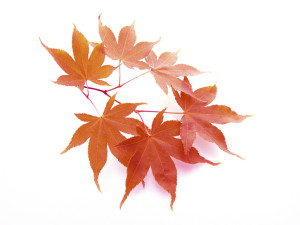For decades Americans have been thrilled by bands marching smartly down the street to a stirring Sousa march. A band, more specifically a community band, is an important part of the American fabric of tradition, lore and history.
For over 200 years Americans have enjoyed being entertained by bands in bandstands in the park, parades, supporting athletic teams on the field and in concert halls in towns and cities. George Weissman wrote in his book Oom Pah Pah—The Great American Band, “Band music makes the pulse surge, the heart pound and is music for the ear as well as the eye.”
Origins
The early colonists brought with them many of the musical traditions they enjoyed while playing, singing and listening to music in their European homelands. These were quickly adopted into the genre of American music. Bands in their fledging years in colonial America took on the persona of established military bands in organization and instrumentation—basically brass bands. Woodwinds did not join bands until later.
Military Bands
Our first military band was patterned after these early bands. The United States Marine Band came into existence in 1798. “It was also our first organized band, military or otherwise that has functioned without interruption since this early date in American history,” wrote Frederick Fennell in Time and The Winds. Today this band is, without question, one of the finest bands in the country.
Ironically, bands flourish in wartime. Music for military troops has always been a rallying point for leading armies into battle. Music serves a twofold purpose of striking fear and confusion in the foe and strengthening the morale, courage and bravery of their own soldiers.
Bands from the Revolutionary War and all the wars that followed, contributed music to rally the troops on to victory. These bands ranged from a simple fife and drum to bagpipes and drums for the British regiments and fully instrumented concert bands of modern times.
Community Bands
A community band is an instrumental ensemble made up of woodwinds, brass and percussion instruments. Bands may include a string bass or harp when needed; unlike an orchestra that is primarily made up of string instruments.
When joining a community band, musicians need previous experience playing in bands or orchestras and should, at least, have an intermediate skill level.
American community bands date back almost 200 years to 1828 with the birth of the Allentown Band, of Allentown, Pennsylvania. This band has functioned without a hiatus since its inception—a record that will never be broken as long as the band is in existence.
Today there are over 2,500 community bands in the United States. They are made up of primarily amateur, volunteer musicians. On holidays there is without a doubt, more band concerts played than any other time of year, especially on July 4th.
Pleasanton Community Concert Band
Among the many local bands in the Tri-Valley Area is the Pleasanton Community Concert Band, conducted by Robert Williams. “Community Bands are one of the most effective ways for adults to revisit the joys of making music they had as school musicians in high school and college,” said Williams.
The city fathers of Pleasanton suggested that a community band be formed to commemorate the Bi-Centennial of the founding of our country. The idea was to recreate an old fashioned community band concert in the park in July 4th, 1976. Williams played French horn in the band from its inception as was appointed director in 1978.
Danville Community Band
After my retirement as Director of Bands at University of California, Davis, my wife, Jan, and I decided to form a community band in Danville. Surrounding towns had established bands and we wondered if there were enough musicians in the area to form a new band. We soon grew to not only be the newest band in the Bay Area but also the largest. I was music director and conductor, and Jan took on the roles of business manager and media/public relations. Over 54 musicians showed up for our first rehearsal on September 20th, just nine days after 9-11. The rest is history, as they say. After nine years we decided to take a lesser role in the band and are very pleased that Robert Calonico, director of bands at the University of California, Berkeley stepped up as director. “Community bands are a vibrant example that participation in music can be for life,” Calonico said.
A quote from Oom Pah Pah—the Great American Band sums it up nicely, “…tens of thousands of just plain Americans who, with their clarinets and tubas and big bass drums have for generations played their hearts out in the streets, gazebos, auditoriums and ballparks of the land.”
Unlike many activities one did in their youth, making music with like-minded people can be enjoyed for an entire lifetime. Our goal is to enhance the cultural life of the community by providing the general public with opportunities to enjoy band music and to allow band members to grow musically.
Don’t miss the Danville Community Band’s Annual Spring Concert, Sunday, June 8, 2014, 3 p.m. at Community Presbyterian Church, 222 West El Pintado Rd, Danville. Free concert and parking
![Tired Housewife[Converted] -kristina](https://aliveeastbay.com/wp-content/uploads/2014/06/Tired-HousewifeConverted-kristina-238x300.jpg)
